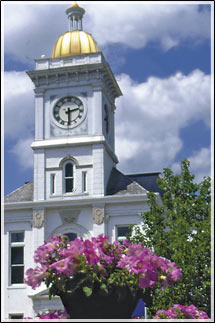About Pine Bluff

Welcome to the story of Pine Bluff which begins with its legendary Civil War battles and evolves into the modern city that is not only a favorite destination in South Arkansas, but also a great place to call home.
Pine Bluff’s Geography
Nestled in the middle south, with its beautiful scenic pine trees that encompass the surroundings, Pine Bluff’s natural beauty and resources provide an inspiring introduction. Regarded by many as the capitol of southeast Arkansas, Pine Bluff sits astride Interstate 530 and U. S. Highway 65 on the banks of the Arkansas River 42 miles southeast of Little Rock and 100 miles upstream of the river’s confluence with the Mississippi River. The history of the area is colorful and travelers can almost imagine being transported back in time to the late nineteenth and early twentieth century when Pine Bluff was a sleepy southern town with a population of about 12,000.
Pine Bluff’s History
The first settler Joseph Bonne, who was half French and half Quapaw Indian, built his log cabin on the high bluff around 1819. His home became know as “The Pine Bluff” because it was the first bluff supporting pine trees upstream from the mouth of the Arkansas River. The settlement officially named “The Town of Pine Bluff” in October 1832 was incorporated on January 8, 1839.
Some of the first shots of the Civil War were fired at Pine Bluff when two militia companies under Captain Joseph W. Bocage stopped the upstream progress of the Steamboat SkyLark. The steamer loaded with supplies for Federal troops at Little Rock and Fort Gibson, Oklahoma, was stopped with musket shots and the Arkansas militia confiscated the supplies for their own use.
The Battle of Pine Bluff took place around the Jefferson County Courthouse on October 25, 1863. Confederate General John S. Marmaduke with 2,500 Confederate forces could not penetrate the courthouse square which had been fortified with cotton bales two deep, even though Union forces commanded by Colonel Powell Clayton only numbered 550 men. A period of construction followed the war with the building of the railroads largely responsible for the recovery of the area economy.
Severe flooding occurred in 1907 and threatened to destroy much of Pine Bluff. A levee was blown up, thus diverting the force of the floodwaters. This act saved the courthouse from falling into the river. Partially burned in 1976, the Jefferson County Courthouse was rebuilt around the center portion of the 1856 building and reopened in 1980.
Higher Education in Pine Bluff
Pine Bluff is home to Southeast Arkansas College and the University of Arkansas at Pine Bluff. Southeast Arkansas College (SEARK College) offers educational programs for one-semester, one-year and two-year certificates and associate degree programs in more than 40 career fields. The University of Arkansas at Pine Bluff offers more than 700 individual courses, 42 bachelor’s degree programs, four master’s degree programs and two associate degree programs. UAPB is a multi-cultural institution and one of the 104 Historically Black Colleges and Universities. Founded in 1873, it is the second oldest public institution in the state.
Outdoor Recreation
Outdoor recreation is a way of life in Pine Bluff. Some of the finest hunting and fishing in the country can be found right here. Flooded rice fields offer the perfect habitat for ducks, while the nearby fields and forests are full of deer and squirrel. Pine Bluff has twice hosted the B.A.S.S. Masters Classic on the Arkansas River, where world records were set for the number of bass caught.
With so much to enjoy, it’s no wonder that the people who live here are so warm and friendly. Whether you are considering a move, moving a business, a vacation or just looking for a wonderful place to call home, find out how perfect your own story can be in Pine Bluff, Arkansas.